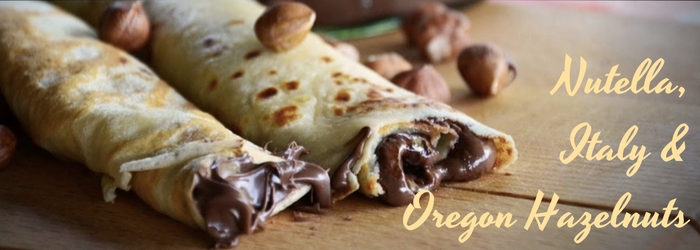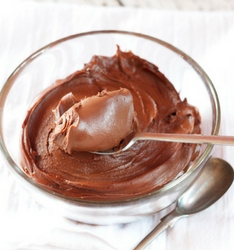The Latest News and Ramblings
A place to share various news, stories and video about wine, travel, winemaking
Pruning
|
|||||||||||||||||||||||||||||||||||||||||||||||||||||||||||||||||||||||||||||||
Whole Cluster
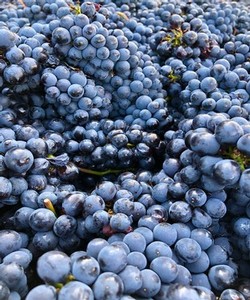
As the harvest season is in full swing, I thought it would be fun to discuss my favorite winemaking technique….Whole Cluster. Whole cluster fermentation was derived from the technique called Carbonic Maceration where a winemaker can place 100% of the clusters in a vessel void of oxygen using carbon dioxide. The fruit is held for 5-10 days then either inoculated with yeast or pressed off and fermented. These wines are typically very fruity, lighter in style and meant to be consumed young. Wines such as Beaujolais Nouveau (Gamay) are often made using partial carbonic maceration.
Rather than do 100% carbonic maceration, I prefer to only add a portion of whole clusters to my tanks. Most of my Pinot Noir wines include an average of about 25% whole clusters in the fermentation vessel. There is some serious biochemistry involved but I will try to keep it simple. Once harvested, we take whole clusters from the vineyard and place them in the bottom of the fermentation vessel which has been purged of oxygen with dry ice. Then we put destemmed fruit on top of those clusters and again cover that tank with a blanket of carbon dioxide using dry ice. At this point we inoculate the fermenter with yeast and proceed with a normal fermentation. However, as the yeast release heat the tank warms up to about 80F which activates a host of enzymes inside each of those intact berries. Under anaerobic conditions (no oxygen), independent of microbial activity, the enzymes transform the natural acids in the berry to a bit of ethanol as well as an amazing array of flavor compounds such as strawberry, cherry, raspberry, and cinnamon. This gives Pinot Noir the lovely “lifted” fruit aromas like framboise that invites you into the glass.
I choose to limit the whole cluster portion of the ferment at 25% because with the whole clusters come the stems. The stems do contribute some tannin and if not ripe could lead to green aromas and bitterness. Some winemakers choose to do whole cluster, and some do not, as their personal preference. This allows for another dimension of character in the wines. Although Pinot Noir and Gamay are the most common varieties where whole cluster is typically employed, you may also occasionally see wines whole cluster in Cab Franc, Syrah, and Grenache.
What Is Malolactic Fermentation?
There are a lot of wine terms that get thrown around in the wine world that can be quite overwhelming. One of those terms is malolactic fermentation. At the risk of taking you back to high school chemistry and biology class, I want to take a moment to explain malolactic and why it is important in winemaking.
First off, there are typically two fermentations that a wine can undergo. Primary fermentation is the yeast turning sugar to alcohol (personally this is my favorite) and secondary fermentation which is malolactic fermentation. Malolactic fermentation is performed by lactic acid bacteria that can use malic acid as a food source. During the fermentation the bacteria turn malic acid, a sharp acid, into lactic acid (a softer acid). Malic acid is the same acid found in foods like granny smith apples which is why they are so tart and sharp. Conversely, lactic acid is often found in milk in the form of lactate which is typically mild.
So why do we undergo malolactic fermentation in wine? There are several reasons, which include softening of the acidity, microbial stability, and flavor development. Most red wines undergo malolactic fermentation to soften out the acidity in the wine. Young red wine tends to be sharp and acidic. By converting the malic acid in the wine to lactic acid, we can soften the palate of the wine. Although we can sterile filter wines, there was a time when bottling wines that had not gone through malolactic fermentation would be at risk of fermenting in the bottle. Lactic acid bacteria are everywhere around us and would get into the wine during bottling (those of you who have ever made homemade sauerkraut know this well). As you can imagine, this is not a great situation as the fermentation releases a small amount of carbon dioxide which can push the cork, or the wine becomes hazy and tastes bad. Today many winemakers choose to bottle unfiltered which will require the need for the wine to have gone through malolactic fermentation.
Finally, there is the desire to enhance the flavor of the wine. Some strains of malolactic bacteria have the potential to produce more of a compound called diacetyl. This is the same compound that makes your movie popcorn taste buttery. Those big buttery chardonnays will all have gone through malolactic fermentation to impart this buttery character in the wine. In fact, there are some well-known chardonnays that add extra malic acid to the wine to increase the amount of food for the bacteria, thus increasing the level of diacetyl and buttery flavor. Quite often these chardonnays also have a hefty dose of new oak on them as well, which is often the toasty vanilla and butterscotch flavors. These aromas work together to create an oaky buttery style that is quite sought after by some.
As for me, all my red wines go through complete malolactic fermentation. However, I do not allow my white wines such as Pinot Gris, Chardonnay, Dry Riesling, Rose, and Sauvignon Blanc to go through that process. I love the beautiful high acidity we have in Oregon, and I believe the minerality and texture of these wines are really showcased by the higher acidity.
So, the next time you smell a big buttery chardonnay or hear someone talking about the wine going through malolactic, you will know all about it.
Art and Science

Often you will hear debates about whether winemaking is science or art. This is a question that opens a lot of discussion and is one that makes me reflect back on my career.
They say your passion is what you would spend the rest of your life doing for free. I feel so lucky to have found my passion at an early age. In so many ways I feel that winemaking chose me. I did not start out to become a winemaker. Like many seventeen-year-olds coming out of high school, I had no idea what I wanted to do. I took a summer job my brother set up for me in a men’s clothing store where I spent my first two weeks in the tailor’s shop pressing clothes. I was miserable, and after a couple of weeks, my oldest brother, who had just taken a job as vineyard manager at Paraiso Springs Vineyards, checked to see how things were going and I said, “this is not my calling”. Fortunately for me, he said he had a job for me cleaning a mobile grape press. I took the job and went to work Monday morning at 6am. For the next two weeks, for 10 hours a day, I hand scrubbed a mobile grape press with Scotch-brite pads and TSP. My first experience in the wine industry was cleaning and sanitation (the most important lesson a winemaker can learn). Once I finished the press, I was asked to see if they needed help in the shop. Over the next couple of weeks, I was changing oil on tractors, welding farm equipment, and helping prepare a fleet of thirteen grape harvesters for the coming harvest. I learned how to work on hydraulics, troubleshoot electrical systems, fabricate, and fix equipment in the field in the middle of the night. There, I learned the value of problem solving, and being handy and I still use these skills every day. Later that summer, the owner called me in and asked if I would be interested in doing grape maturity sampling. Since it involved some basic chemistry with a pH probe and titration I was in heaven, as the only classes I had enjoyed in high school were chemistry and agriculture. Every day I would sample different vineyards then spend the end of the day presenting my results of Brix, pH, and Ta to the owner. He would also ask me to explain what pests or diseases I saw when I was walking the vineyard and from doing that, I learned the basic problems encountered in vineyards, how grapes mature and how decisions are made at harvest.
At the end of the summer, Paraiso Springs held a release party, and I was invited to attend. I met their winemaker and was able to see how he interacted with the customers, holding court, and telling stories. Everyone loved meeting the winemaker. I learned a lot that first summer and asked the owner how you become a winemaker. He said go to UC Davis, they have a degree. Both my parents went to Davis and my maternal grandparents went to Davis, so needless to say I was enamored with the idea of a legacy. I worked for Paraiso Springs every summer and winter break to help pay for college and to get experience. When I finished my degree in Fermentation Science, I decided to stay an extra year to complete the Master Brewer’s program. I took a job as an Assistant Brewmaster and found myself bored with brewing the same batches over and over and yearned for the ever-changing nature of the wine industry. After a year, I moved to Napa Valley to start from the bottom at Robert Mondavi Winery and worked my way up to Director of Winemaking at age 26. Working for Robert Mondavi opened my eyes to the world of wine and the vast experiences it represents. Whether it was the architecture and design of Cliff May found in the iconic arch and tower, the sculptures by Beniamino Bufano, the annual summer concert series, or the host of culinary events every year, we were always immersed in the culture of wine, food, and the arts at Robert Mondavi. We honed our craft while continuously pushing the envelope on research in both the winery and the vineyard. Selling wine was a big part of a winemaker’s job at Robert Mondavi and I learned quickly how to present my wines to large groups of people and to hold court by telling great stories at a winemaker dinner. While in charge of our Joint Ventures in Italy and Australia I was lucky enough to experience the best of the old-world tradition and New World techniques that is very reflective of my winemaking style today. As I look back on my time at Robert Mondavi Winery, I feel truly lucky to have had the opportunity to experience so much.
After 25+ years as a winemaker I have come to believe winemaking is not just art, or science. Wine is history, travel, theater, engineering, biology, chemistry, physics, food, literature, education, spirituality, and so much more.
This quote by Robert Mondavi sums it up best: "Wine to me is passion. It's family and friends. It's warmth of heart and generosity of spirit. Wine is art. It's culture. It is the essence of civilization and the art of living."
Cheers,
Scott
Wine Aging
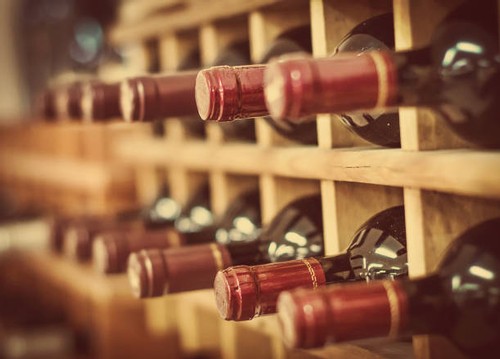
Wine Aging
I have had a few great questions about what makes a wine age. Ageability really comes down to three things in wine…acidity, tannin and alcohol. Aging is just very slow oxidation. Without getting too crazy with the chemistry, I will try to break each one down.
Acidity and more importantly the pH of the wine has a huge effect in determining the reactivity form of many of the compounds in wine that act as antioxidants such as color and tannin. Wines with higher acid and lower pH tend to age better than wines with low acid and high pH. Acid also plays a key role in the balance of a wine and preserving the fruit and aromatics.
Tannins are a class of compounds that come from the skins and seeds of the grape as well as from oak barrels. Tannins act as natural antioxidants. The higher the tannin the more antioxidants available to slow down the aging process. Wines like Cabernet Sauvignon, Petite Verdot, Tannat and Petite Sirah all tend to have very high tannin levels. Whereas Pinot Noir, Gamay, and Barbera tend to have low natural tannin levels but often will have higher acidity to assist with aging. A good indication of the tannin level of a particular wine is the level of astringency you sense on your palate. This is the sensation of drying you feel on your gums after you swallow a sip of wine.
Alcohol can also play a role in ageability, especially when it comes to dessert wines and fortified wines such as port. Alcohol levels of 17-21% act as a preservative and allow these wines to age incredibly well. The oldest wine I have ever tasted was a Madeira from the 1800’s. Madeira is a fortified wine with extremely high acidity thus giving it both high acid and high alcohol. It was still young!
Aging wine is romantic. Many consumers fall in love with the idea of dusting off that bottle you have been saving for a really special experience only to have the wine be past its prime. I can’t tell you the number of wines I have saved for that special night only to have them be over aged and undrinkable. At the end of the day, you have to ask yourself if you really like aged wine. As a wine ages the fruit will typically go from fresh fruit characters to dried fruit characters. The acidity will soften over time and the tannins will soften. The overall wine will hopefully become more complex and integrated but eventually there will come a time when the wine peaks and starts to diminish in quality. Just because you age a wine does not make it better. Most wines these days are made to be drank upon release, even some very expensive bottles may not hold up to aging.
If you want to age your wine be sure to cellar in a dark place with a consistent temperature. Ideally 55-60F is a good aging temperature, but the important thing is to not let the temperature fluctuate a lot. This expands and contracts the headspace inside the bottle allowing more oxygen to enter the bottle. If you do not have a wine fridge built for aging, a closet in the center of the house works well. Be aware of your climate and how the temperature varies.
Just remember, life is short and enjoying a wine a little young is never as bad as not enjoying it at all!
"Nice legs.... why thank you!"

“Nice legs…. why thank you!”
While we all know the story of this lamp, wine legs have a legacy of their own…
Let’s admit it, we have all had that wine expert friend or family member tell us “Wow this wine has nice legs.” Ever wonder why people look at the legs of a wine and what it tells them? The legs running down the inside of your glass are actually alcohol. The more legs the more alcohol (try putting some vodka in a wine glass, talk about legs!!).
So, what does this tell us, and should we really evaluate a wine based on its legs? Well for the answer we must go back about 800 hundred years to when English wine merchants were tasked with buying wine to bring back to the castles of England. In those days it was exceedingly difficult to get grapes ripe without some sort of terrible weather, pest or disease event forcing an early harvest. However, when those great vintages came along that allowed the grapes to ripen a bit longer, they developed more flavor and sugar. These vintages were sought after for being of higher quality because they had more hang time which in turn usually meant higher sugar. Since more sugar means more alcohol in the finished wine, merchants would use the legs of the wine to evaluate the wine’s “ripeness” with hopes of purchasing the best wine. Keep in mind the alcohol of wine back then was much lower than we typically see today. A wine with 10-11% alcohol would have been high back then! Today of course you can just look at the label to see the alcohol and of course higher alcohol does not necessarily mean higher quality.
So, the next time someone holds up a glass to look at the legs, you can explain to them that they may want to just look at the label if they want to know the alcohol.
Sense Memory
Yesterday I was catching up with a friend who is recovering from COVID-19. He had a pretty mild case but like a lot of people who have had COVID, he lost his sense of smell and taste. Five weeks later it still has not come back 100%. It made me realize just how important my sense of taste and smell is. As a winemaker, my livelihood depends on my palate and more specifically, my ability to sense the aromas, flavors, textures and taste of a wine. Customers often say, “You must have an amazing palate!” like it is some sort of gift I was born with. The truth is we are all born with the same biological abilities to smell and taste. What separates those that are deemed to have “great palates” is the individual’s ability to connect their brain with their olfactory and reference a previous smell or taste. Remember, none of us were born with a memory bank of smells and tastes, nor were we born with the ability to put language to describe those senses.
This concept of what wine tasting is really became clear one day while watching the “Actor’s Studio” with James Lipton. He was interviewing Dennis Hopper about his many great films and he brings up “Easy Rider”. He asks Hopper what being on the set was like and the many rumors about the drug use during filming. Hopper laughs and explains that while he was never high while acting in the film, he could have never acted out those scenes if he had never experienced being high in real life. He said the essence of acting is relying on your “Sense Memory”. That really resonated as the same idea of wine tasting; we are calling on our sense memory to recall flavors experienced in our past to describe a wine.
Becoming a great wine taster takes two things in my opinion, experience and clarity. Experience comes from our everyday life. Since the day we were born we have been taking in the world around us. Since almost all of the flavors in wine are associated with those in the natural world, our vocabulary of wine terms is often associated with things found in food and nature. I had the pleasure of working with a great chef at one of my first jobs with the Robert Mondavi winery. Her name is Denise and she taught me a lot about the importance of fresh ingredients in cooking. She would often invite me along to purchase the items needed for an upcoming luncheon we were putting together at the winery. As we strolled the aisles at the market, Denise would pull out a pocketknife and started cutting into fruits and vegetables. “Close your eyes” she said, “here smell this tangerine…now this orange, see the difference?” I had never really taken the time to smell the difference and let it register in my brain. It was a turning point in my career. From then on, I spent more time taking in the smells of the natural world and storing them for later. We all come from different areas of the world and different cultures. Based on your experiences in the world you have specific set of personal sense memories that you can use to describe wine. I will never forget the first time I was invited to sit with the winemakers at my first job, we would taste 6-8 wines blind, then discuss. This particular tasting was chardonnay from our cellar that was being blended for bottling. As I let my pen flow with whatever came to mind, I started listing smells, flavors and tastes. When it came time to discuss, the head winemaker called on me to tell everyone what I saw in the first wine. Looking at my notes I was quite nervous, “lemon curd, pear, yeast, and mother’s makeup” everyone laughed. When asked what “mother’s makeup” was I explained that the wine smelled exactly like the base makeup my mother used to apply. I would sit on the end of her bed before school while she got ready for work…. the wine reminded me of that experience, it was my sense memory.
Another important idea in being a good taster is emotional clarity. When you are experiencing emotions such as frustration, nervousness, worry or anger, I believe our ability to sense aromas and taste wines is greatly diminished. Most days I have a routine where I come in have my coffee, answer emails and then go downstairs to taste through monthly QC, competitive sets or blend tastings. I have found that if I am still thinking about an email or if something is bothering me, or in general my head is not clear, my tasting notes are simple and nondescriptive. Over the years when I have found myself in these situations I put on some music, the sense memories start to connect, and I am once again able to connect the dots between what I am sensing and my ability to describe it with language. I find Pink Floyd’s “Dark Side of the Moon” is particularly good for Pinot Noir tasting days! Quite often we see first time tasters in the tasting room, and they are worried about the etiquette of wine. Unfortunately, wine has had its fair share of snobbery over the years that makes many people uncomfortable when tasting wine. Tasters are often so worried about how to swirl the glass or what they are supposed to be tasting that they never really get to experience all the great things about wine. We preach non-pretentious education in the tasting room and really try to help people learn and become comfortable with the terminology and etiquette, all the while having fun. I urge you to do the same when sharing wine with friends and family. We can educate without being snobs!
Remember at the end of the day wine is supposed to be fun. We all experience wine differently and there are really only two terms you need to know Yum and Yuck!
Grape Harvester
Pairing Wine With Winter Steelhead
|
|||||
Nutella, Italy and Oregon Hazelnuts
|
Blog
Recent Posts
-
February 3, 2023
-
October 6, 2022
-
July 6, 2022
-
April 6, 2022
-
January 3, 2022
-
December 1, 2021
-
February 24, 2021
-
February 26, 2018
-
February 21, 2018
-
February 5, 2018





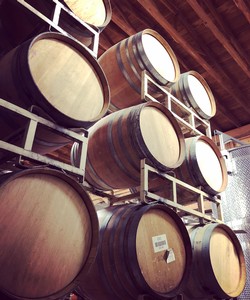
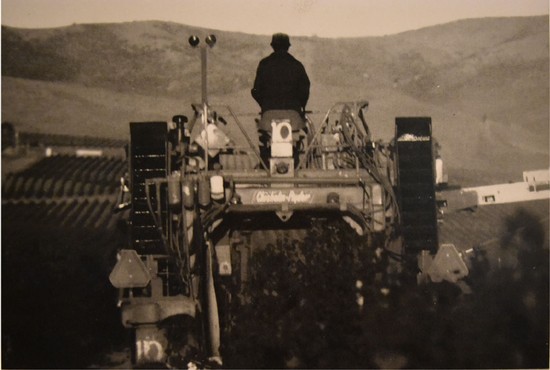
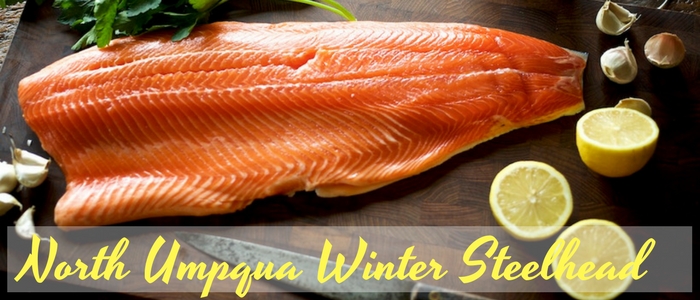
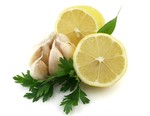 Many people may not know how to properly pair wine with Steelhead, so in honor of this wonderful winter bounty that we're so lucky to have, we're sharing our favorite recipes and wine pairings to get the most flavor and enjoyment out of your Winter Steelies. Enjoy!
Many people may not know how to properly pair wine with Steelhead, so in honor of this wonderful winter bounty that we're so lucky to have, we're sharing our favorite recipes and wine pairings to get the most flavor and enjoyment out of your Winter Steelies. Enjoy! Steelhead falls into the Meaty Fish categoriy, types of fish that are firm with a meaty and steak-like texture. For meaty fish, the best wine pairings are rich white wines with lots of flavor and even a few red and rosé wines. This this particular recipe, we recommend our
Steelhead falls into the Meaty Fish categoriy, types of fish that are firm with a meaty and steak-like texture. For meaty fish, the best wine pairings are rich white wines with lots of flavor and even a few red and rosé wines. This this particular recipe, we recommend our 